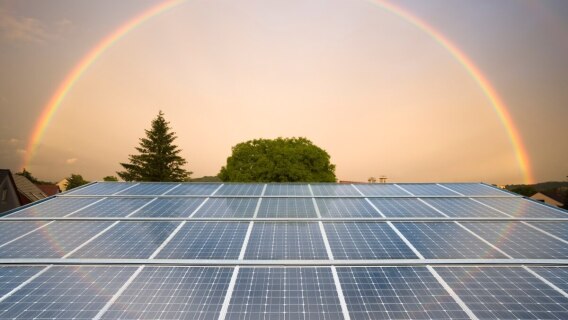“The stock is not the company, and the company is not the stock.” - Jeff Bezos
The internet largely credits the Amazon CEO with this famous investment-related utterance, though he surely was not the first to say it.
Bezos said it in reference to Amazon’s dramatic faceplant when the Dot Com bubble burst at the turn of the century – AMZN stock plummeted from 113 a share to 6 a share in less than a year. It wasn’t because something was wrong with the company. On the contrary, Amazon – though not the multi-pronged global behemoth it is today – was doing just fine a little more than half a decade into its existence and having just expanded beyond its humble beginnings as an online bookseller. In fact, it had enough cash on hand to survive the Dot Com crash without requiring outside funding, and within a couple years it was profitable and on its way to becoming one of the great growth companies in American history. But the stock didn’t eclipse its $18 IPO price for good until the second half of 2002 – more than five years after its debut.
[text_ad]
These days, few sectors epitomize Bezos’ “stock is not the company” mantra like renewable energy, namely solar stocks.
Inflation Reduction Act = Solar Momentum
Renewable energy has been one of the fastest-growing industries in the world for years. But renewable energy stocks have long been … bleh. The Invesco WilderHill Clean Energy ETF (PBW), a good proxy for clean energy stocks, peaked at 140 per share … in 2007. Its highest closing price since was in February 2021, at roughly 133 a share. Today, it trades at a mere 21 per share. Yuck.
Recently, part of the problem has been wind. The Inflation Reduction Act President Biden signed in 2022 – aimed at reducing America’s greenhouse gas emissions by roughly 40% below 2005 levels by 2030 – was supposed to set in motion a boom in renewable energy projects thanks to sizable tax breaks and other incentives. But new wind projects – for a variety of reasons, namely that wind projects are more specific in their location needs – have thus far badly lagged behind projections, at only a quarter of the average capacity additions (measured in gigawatts) expected by 2027, according to a New York Times story this month.
Meanwhile, solar projects have more than picked up the slack. The U.S. is expected to add close to 40 gigawatts of solar energy capacity this year – more than double last year’s tally and more than triple what was added in 2022. According to Inflation Reduction Act estimates, solar gigawatts added could reach an average of 60 by 2030 – and solar projects are already in line with initial projections.
And yet, solar stocks haven’t exactly set the world on fire (no pun intended) either. The Invesco Solar ETF (TAN), whose holdings include some of the biggest publicly traded solar power companies in the world, with American companies First Solar (FSLR) and Enphase Energy (ENPH) its two largest positions, is down 18% year to date and nearly 50% since President Biden signed the Inflation Reduction Act on August 16, 2022. Mind you, that sharp nosedive in solar stock share prices has come at a time when solar companies around the world are almost universally reporting record sales.
As Bezos said, the company is not the stock.
Solar Stocks Due for a Bounce-Back
But if you look at the fraught history of renewable energy stocks, they never stay down too long. In 2013, the PBW was up 50% after bottoming in November of 2012. After another bottom in November of 2016, the PBW shot up 41% in the next 13 months. After the ETF cratered along with the rest of the market during the 2020 Covid crash, it rose more than five-fold – from 24 to 132 – in the ensuing 10 months!
Of course, renewable energy stocks have since pulled back sharply once again. But it appears that another bottom has been put in. The PBW dipped to a closing low of 19.21 on April 19. It has touched as high as 23 since, though it has pulled back to just below 21 in recent weeks. Solar stocks, as measured by the TAN, have performed even better of late, up 11% since an April 19 bottom.
With momentum potentially returning to renewable energy stocks – and given the booming growth in solar projects in the wake of the Inflation Reduction Act – I recently added an under-the-radar solar stock to my Cabot Value Investor portfolio. To learn its name, click here.
But you would probably fare well buying any number of undervalued solar energy stocks now and holding on to them for the next couple years.
[author_ad]

